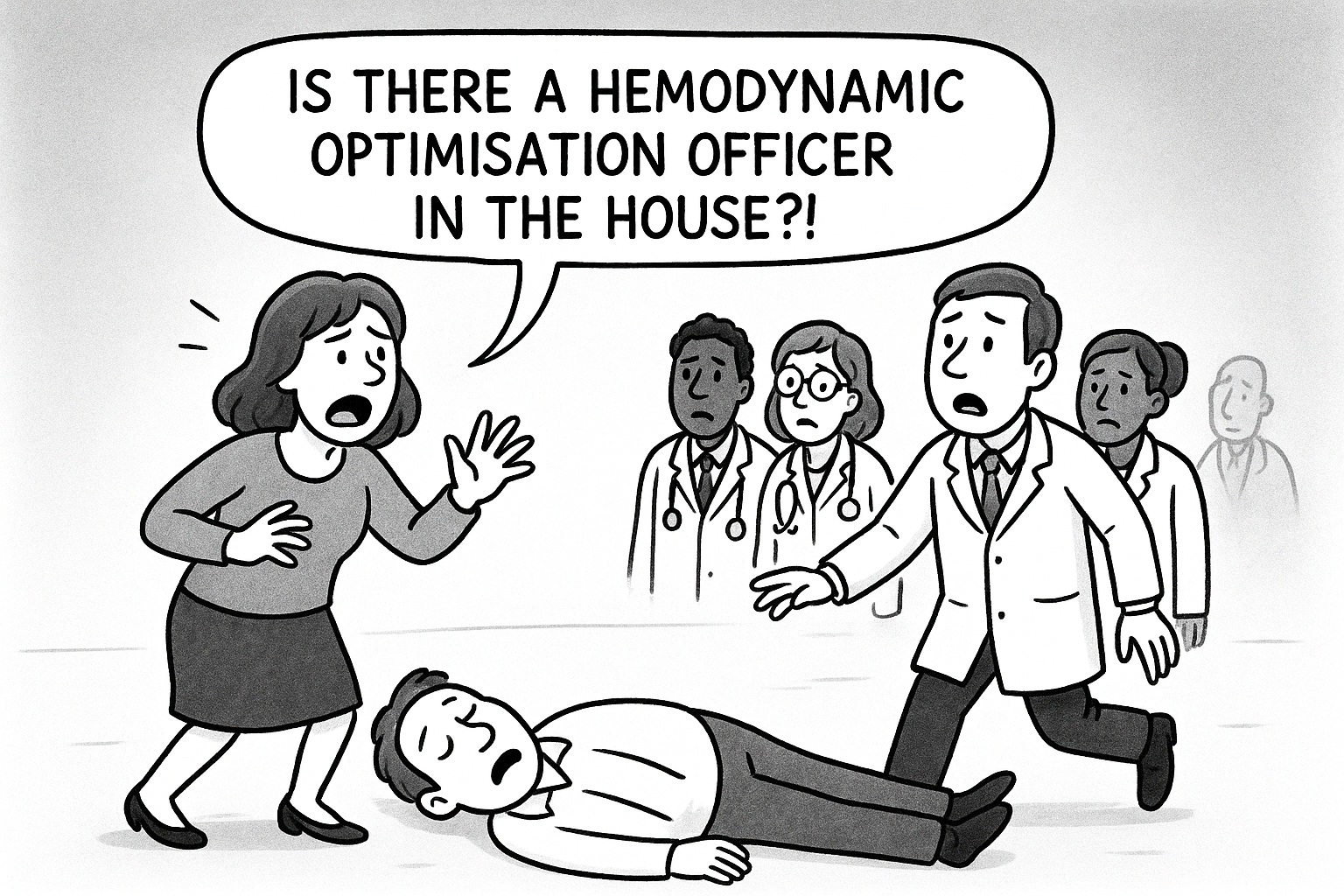
29 Sept 2025 ● Steven Doyle
Why public sector vacancies go missing (and how to solve it)
Here’s how Jobs Go Public is using AI-powered job classification to put the right roles in front of the right people
By Steven Doyle, Director of Product Strategy & Partnerships

Imagine a library that receives thousands of new books every day, only to shelve them at random. A crime novel in 'Cooking,' a children's book under 'Law,' a leadership magazine hidden in 'Romance.' Even if the books are excellent, readers can't find them. They leave empty-handed, and the librarians wonder why footfall is down.
Unfortunately, this metaphor illustrates a daily reality for many public sector job ads in the UK. Poor job classification often means the right candidates never see key roles on job boards. At least that's been the case, up until now.
Read on to find out how we’re using AI for job search optimisation…
Why do so many public sector jobs go missing?
One of the key recruitment challenges facing the public sector is securing a high volume of good-quality candidates for roles.
A significant contributing factor is a lack of best practices for job posting. This is largely demonstrated by the fact that 4 in 5 job seekers in the UK state that job searching is demoralising because it is too difficult to find the roles that are relevant to them.
Improving job ad classification has been a problem we at Jobs Go Public have wrestled with for more than 25 years. Job data reaches us from scores of different ATS platforms, hundreds of individual employer feeds and an array of aggregators.
Each source is (what we lovingly refer to as) "exactly different." Salary might be a numeric value in one feed, a free text description in the next, a dropdown list of ranges in another, or buried in a PDF as a final act of defiance.

Traditionally, the only option for any job board has been to manually map and re-map all incoming fields to a taxonomy, which is a framework that organises jobs against categories such as location or occupation.
This can be a fragile and time-consuming process. And each time a job feed or ATS supplier would change its data structure even slightly, this house of cards would wobble, and often collapse altogether (resulting in lots of unposted job ads and more manual mapping).
In combination with a uniquely British Public Sector habit of creating cryptic job titles that are acronym-heavy, regulation-specific or misaligned with terms candidates actually use to search, the result is clear: many roles remain effectively invisible.
Why job titles matter for recruitment
How does this actually look in practice?
We've observed some common instances on jobsgopublic.com where job titles don't quite align with the actual responsibilities or the more widely understood meaning of the role.
For example:
‘Section 20 Officer’ - More commonly known as a ‘Leasehold Officer’, this job title offers external candidates little information about the role itself.
‘Business Unit Leader’ - Commonly used for management-level positions, the lack of specificity makes this job title difficult to classify without further context.
‘Midday Supervisor’ - Frequently a part-time position, the term ‘Supervisor’ may fail to match with the typical search behaviour of a candidate looking for this type of role.
‘Information Governance Lead’ - More commonly known as a ‘Data Protection Officer’, this non-standard terminology may slip through the net during a candidate search.
Upon first impression, if you were asked to classify these roles into a taxonomy, would you know which occupation categories to map these roles to?
Common job search behaviour
The reason this mismatch in job title semantics is crucial is because of the way that candidates actually search for jobs once they land on a job board.
Here’s some real data from jobsgopublic.com:
In the last month, our top 5 job searches were as follows:
- ‘Administration’
- ‘Housing’
- ‘Finance’
- ‘Project Management’
- ‘Class Teacher’
The pattern with this search behaviour is that candidates tend to use what we call ‘head terms’. These are common, simple, or broad phrases which return a higher volume of less specific results.
However, in the examples above, jobs like ‘Section 20 Officer’ would be completely missed by a ‘Housing’ search unless correctly classified into the job taxonomy.
In the absence of more common search terms, this job title would normally represent a high risk of slipping through traditional classification and remaining invisible in most candidate keyword searches, despite representing a genuine opportunity on our network.
What’s more, supposing a candidate search returns this role, they may be less likely to click on the listing due to a lack of understanding.

The breakthrough: AI-powered job classification
The dawn of open-source Large Language Models (LLMs), like ChatGPT, Claude and Gemini, has paved the way towards an entirely new approach to solving these problems, and what was once beyond a system developer’s imagination is already here.
At Jobs Go Public, we are now using AI recruitment technology to power a new classification tool that solves many of the data-mapping and semantic challenges we’ve faced.
Since June this year (2025), we've been piloting a model that automatically ingests job data from any source, cleanses it, and accurately classifies it before it reaches our job boards.
This breakthrough eliminates our reliance on fragile manual mapping processes and finally gives us the capability to handle the complex semantics of Public Sector job titles (see my GPT-generated cartoon).
How does the classification work?
When our new classifier encounters a role like the ‘Section 20 Officer’ mentioned above, it can look for better-known job title semantics (such as ‘Leasehold Officer’).
Further, supposing none were available, the model can quickly detect terms such as 'leasehold’ or 'service charge' along with 'Section 20' responsibilities within the job description text, and return a classification in our 'Housing' and 'Property Management’ taxonomy categories.
The model also adapts as it learns. When encountering something new, like emerging roles in digital transformation or climate change, it can infer the right category, suggest new classifications if needed, and even go further to flag them for human review.
For the first time, we can help councils to achieve a level of consistency and clarity across job data sources that was previously impossible, and to keep pace with the future of work as new roles and skills emerge.
What this means for council recruitment teams
- Better job ad visibility – More relevant applicants reach hard-to-fill roles
- Improved candidate experience – Clear, complete ads strengthen your employer brand
- Enhanced data quality – Even data scraped from other job posting sites becomes a viable, high-quality source
- Consistent taxonomy – Cleaner data for reporting, compliance and benchmarking
What this means for your candidates
Find the right jobs faster – This job search optimisation means no more cryptic job titles or hidden roles when candidates are looking for relevant opportunities
Clearer, richer adverts – Salary, working pattern, and key details are presented consistently
More relevant alerts – Roles which match their job search preferences are delivered directly, even when the job titles are unusual
Best practice: working with AI classification
We understand that HR leaders rightly feel cautious about AI tools. I still maintain that where decisions impact real people, real people should make those decisions.
For this project, our use of the technology focuses specifically on an area where AI performs exceptionally well… analysing large volumes of complex and non-uniform data, applying logic, understanding and structure, before executing tasks based on this.
While our model handles the heavy lifting of classification, HR teams can still maximise their success by adopting some straightforward best practices when creating job adverts:
1 Balance narrative with searchability
Job title semantics remain crucial. Your "Strategic Sustainability Lead" might tell an internal story, but you should consider… Do candidates more commonly search for "Environmental Manager"?
Consider dual approaches: use search-friendly primary titles on your vacancies while explaining the strategic context in the role description.
2 Include key terminology in the job description
Whether it's "Section 106," "SEND," or "statutory duties," include the specific or common terms, regulations, and responsibilities relevant to your sector.
These are not only keywords that may be frequently searched by candidates, but also help the AI classification, even when these terms aren't in the job title.
3 Avoid internal jargon
In the converse to the above, be sure to try and avoid using acronyms or jargon that may only be used within your specific department. These may confuse candidates and make it more difficult for our AI classification to match your role to similar jobs.
4 Ensure you consistently provide complete job data
Salary ranges, working patterns, and location details should be structured data wherever possible, not buried in free text. This makes classification more accurate and candidate experience significantly better.
5 Think like your candidates
Before posting, ask: "What would someone actually type into a search bar to find this role?" Often, the answer differs significantly from internal terminology or formal job evaluation titles.
If you’re unsure, conduct a test search of your job title on the job board and see if it returns any relevant results.
The goal is creating job adverts that serve two purposes: providing a logical narrative for your organisation while using the terms candidates actually search for online.

Early results and future outlook
Since launching the classifier, we immediately tracked measurable improvements in application rates for classified job ads, most notably where semantic challenges were mitigated by the new model.
While we’re continuing to train the model, based on its early success, we’re expanding our pilot so all councils across the UK who post job opportunities with Jobs Go Public will benefit from our new classifier tool.
But for Jobs Go Public this is just the start. Our roadmap includes developing our classifier further to help Councils gain access to better benchmarking tools that will assist in areas beyond advertising, such as job evaluation and organisational design.
What I can already say with certainty is that the intersection of better classification practices and emerging AI tools offers very promising paths forward for public sector recruitment, and I’m excited to see where this leads.
When the talent is out there, the question is: can they find you?
Frequently asked questions
Q: Why does job classification matter if we're posting on multiple job boards anyway?
A: Poor classification means your jobs appear in the wrong categories or to the wrong audience. A "Strategic Environmental Lead" miscategorised under "Administration" won't reach environmental professionals, even on multiple boards. Proper classification ensures visibility to relevant candidates.
Q: Does this mean we have to change all our internal job titles and structures?
A: Not necessarily. You can maintain internal titles for HR systems, pay scales, and organisational structure while presenting external-facing titles that candidates understand and search for.
Q: Should we use internal job titles or candidate-friendly titles in our job adverts?
A: Use candidate-friendly primary titles with internal context in the description. For example, use "Housing Manager" as the main title, then explain it's the "Tenancy Sustainment Officer" role internally. This serves both search algorithms and candidate expectations.
Q: How do we balance our formal job evaluation titles with what candidates actually search for?
A: Consider a dual approach: lead with searchable terms, then reference formal titles. E.g. "Social Worker - Looked After Children" is more discoverable than "Principal Practitioner (LAC Services)", while maintaining internal accuracy.
Q: Do abbreviations and acronyms hurt our job visibility?
A: Yes, they can do. Unless candidates commonly use those abbreviations (like "HR" or "IT"), spell them out. "EHO" should be "Environmental Health Officer," "DFG" should be "Disabled Facilities Grant."
Q: How can we make technical or specialist roles more discoverable?
A: Include both technical and plain English terms. "Building Control Surveyor" should also mention "Building Inspector" or "Construction Inspector" to capture candidates from private sector backgrounds
Q: How do we handle roles that don't fit standard categories?
A: Focus on the primary function rather than the unique elements. A "Climate Change Adaptation Officer" might be better positioned as "Environmental Policy Officer - Climate Change" to capture the broader skill set.
Q: What about senior roles with strategic titles - do these need changing too?
A: Even senior roles benefit from clarity. "Head of Transformation" could be "Head of Organisational Change" or "Director of Business Improvement" depending on the actual focus.


